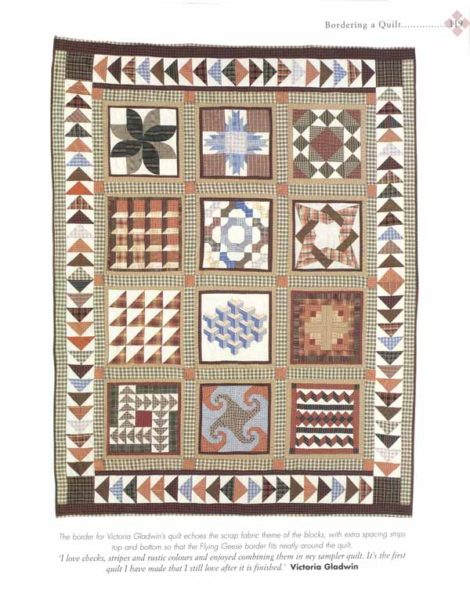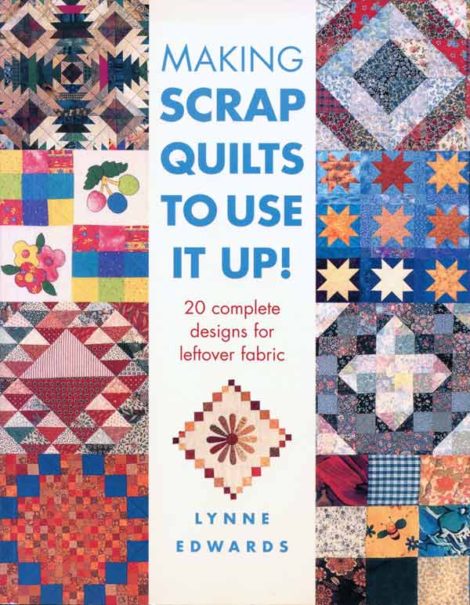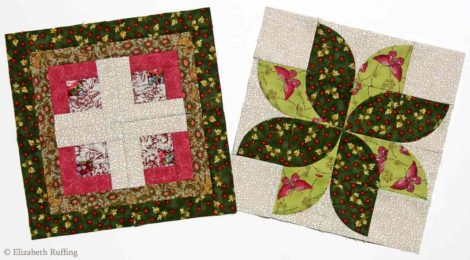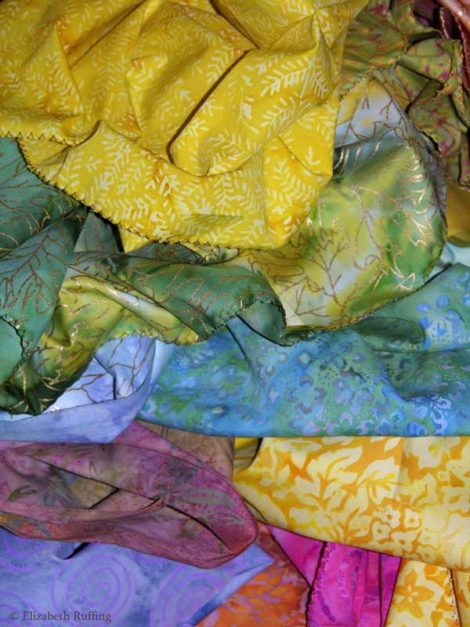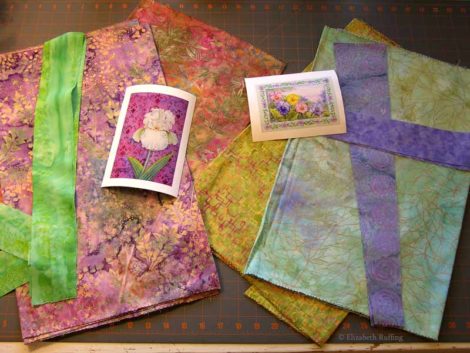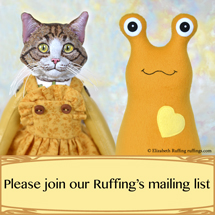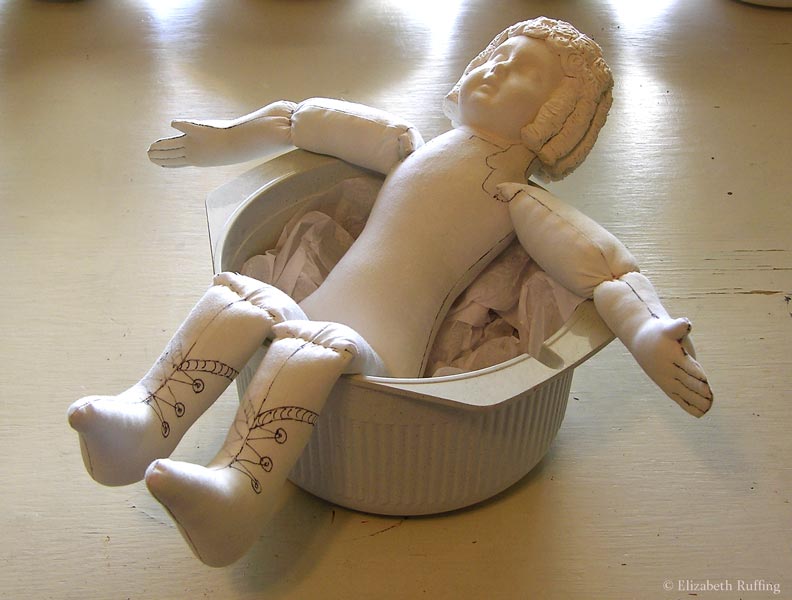 is waiting for some new feet. I have been experimenting with Li-Qua-Ché pourable papier mâché and Creative Paperclay over fabric. I’ve got the basic modeling of this doll’s head done, and I’ve set her up in a bowl so I can get to her hands and feet without worrying about them denting on the table as I sculpt. Sitting on my desk this way, she reminds me of someone floating by on a raft in a swimming pool. She doesn’t look like she minds the wait.
is waiting for some new feet. I have been experimenting with Li-Qua-Ché pourable papier mâché and Creative Paperclay over fabric. I’ve got the basic modeling of this doll’s head done, and I’ve set her up in a bowl so I can get to her hands and feet without worrying about them denting on the table as I sculpt. Sitting on my desk this way, she reminds me of someone floating by on a raft in a swimming pool. She doesn’t look like she minds the wait.
Quilt block of the month class, with Lori Mann
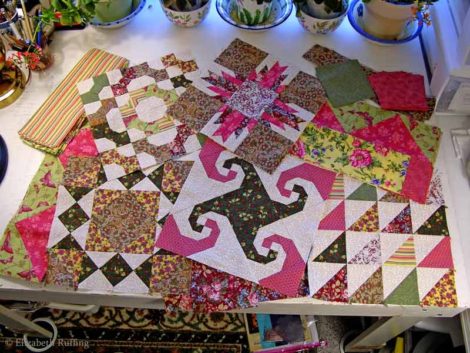 Sometimes I like to sit and sew by hand. It’s relaxing and meditative. I know that is why so many people like hand quilting. This is a hodgepodge of quilt blocks from Lori Mann’s quilt class. She volunteered to teach a group of us, and her patterns and instructions have been great. (Thanks, Lori!) We have been meeting at her house, or in a church basement, for her demonstrations of how to make each block.
Sometimes I like to sit and sew by hand. It’s relaxing and meditative. I know that is why so many people like hand quilting. This is a hodgepodge of quilt blocks from Lori Mann’s quilt class. She volunteered to teach a group of us, and her patterns and instructions have been great. (Thanks, Lori!) We have been meeting at her house, or in a church basement, for her demonstrations of how to make each block.
Lori used a photo of Victoria Gladwin’s quilt, that is featured in the book Making Scrap Quilts To Use It Up, to make instructions for each quilt block for her class, because the book had none for that particular quilt. Lori simplified some of the blocks to save our collective sanity. Disregarding all potential threats to my own sanity, I got a copy of the book on eBay and I have been happily re-complicating the quilt blocks ever since.
You can find a used copy of the book on eBay or on Amazon, but remember, the instructions for the quilt are not included in the book. Lori made those up for us using a program she has on her computer. I drew the designs out on paper, to size, and then I made templates for myself, on template plastic, which you can get at JoAnn’s, or at Michael’s, or at other craft stores, or online.
I drew the blocks on tracing paper, using a ruler, and then used rubber cement to glue them onto poster board. That isn’t necessary. Tracing paper is what I had that was large enough to accommodate 12 x 12 inches. I found the poster board kept the drawing stable for me. You could draw them right onto poster board, a large piece of paper, or several pieces of paper taped together, and then make your own templates.
 I’m only one class behind now. I even thought I’d try to get ahead. The next class is a paper-pieced block. Being convinced I couldn’t match any of the seams up without drawing the whole block out to size and then cutting it apart, I started drawing, and erasing, and drawing, until the block was too complicated to be paper-pieced. This is why I am always behind. I am not happy if I don’t make a thing more complicated than it has to be. My worst offense so far has been our bow tie block. Once I was done, mine had eighty individual parts that I put together to make a twelve inch square. But…it looks really nice. I’m not sorry!
I’m only one class behind now. I even thought I’d try to get ahead. The next class is a paper-pieced block. Being convinced I couldn’t match any of the seams up without drawing the whole block out to size and then cutting it apart, I started drawing, and erasing, and drawing, until the block was too complicated to be paper-pieced. This is why I am always behind. I am not happy if I don’t make a thing more complicated than it has to be. My worst offense so far has been our bow tie block. Once I was done, mine had eighty individual parts that I put together to make a twelve inch square. But…it looks really nice. I’m not sorry!
OOAK, One-of-a-kind, Original Iris and Pansy Floral Art Quilts by Elizabeth Ruffing
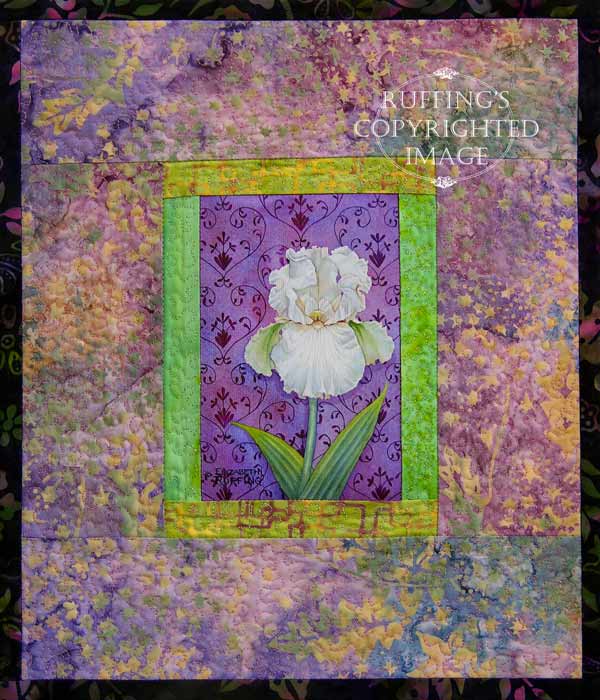
 This is a one-of-a-kind art quilt made from 100% cotton batik fabrics, framing an archival quality canvas print of one of my original watercolors called “Valentine”. The canvas print is of a pale pink, almost white, iris, set against an Art Nouveau wallpaper design of darker muted magenta leaves winding in a heart-shaped pattern against a lighter muted magenta background.
This is a one-of-a-kind art quilt made from 100% cotton batik fabrics, framing an archival quality canvas print of one of my original watercolors called “Valentine”. The canvas print is of a pale pink, almost white, iris, set against an Art Nouveau wallpaper design of darker muted magenta leaves winding in a heart-shaped pattern against a lighter muted magenta background.
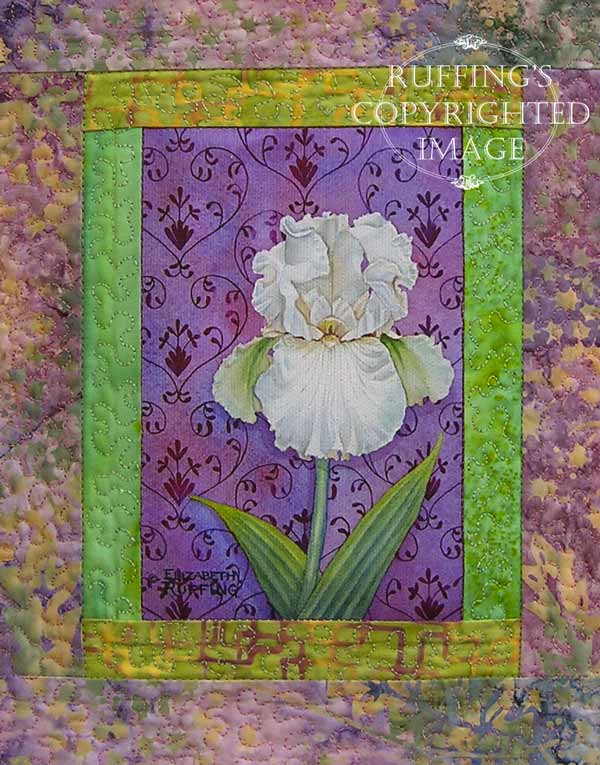 The print is framed by two complimentary shades of green batiks, which are then framed with a batik of muted mauves, purples, golds, greens, and blues. The outer edge is bound with a black batik with a subtle magenta and green pattern. The entire effect is really very beautiful, especially in person.
The print is framed by two complimentary shades of green batiks, which are then framed with a batik of muted mauves, purples, golds, greens, and blues. The outer edge is bound with a black batik with a subtle magenta and green pattern. The entire effect is really very beautiful, especially in person.
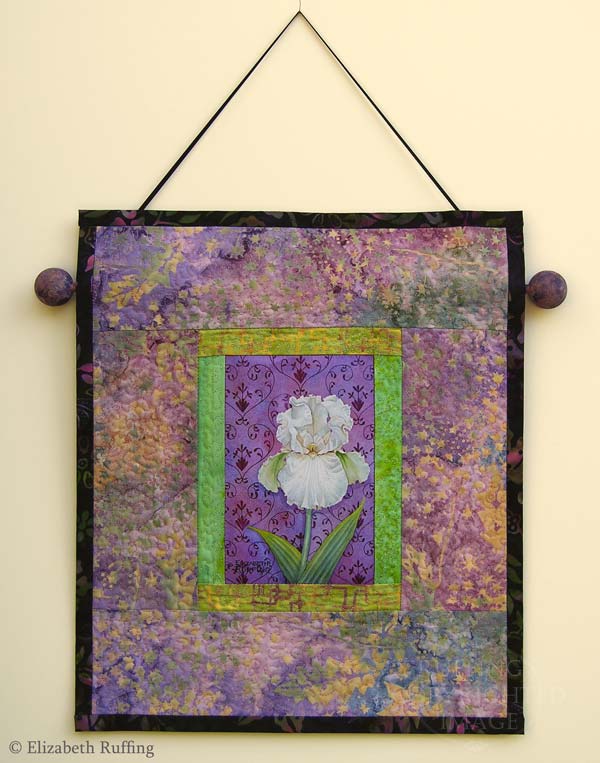 The quilt is machine quilted in a stippled pattern of meandering stitches that go well with the batik patterns. There are no raw edges. A sleeve is sewn into the back of the quilt and a wooden decorative rod with rounded ball ends slips inside. The wooden rod is sponge-painted with acrylic paint in colors that match the background batik.
The quilt is machine quilted in a stippled pattern of meandering stitches that go well with the batik patterns. There are no raw edges. A sleeve is sewn into the back of the quilt and a wooden decorative rod with rounded ball ends slips inside. The wooden rod is sponge-painted with acrylic paint in colors that match the background batik.
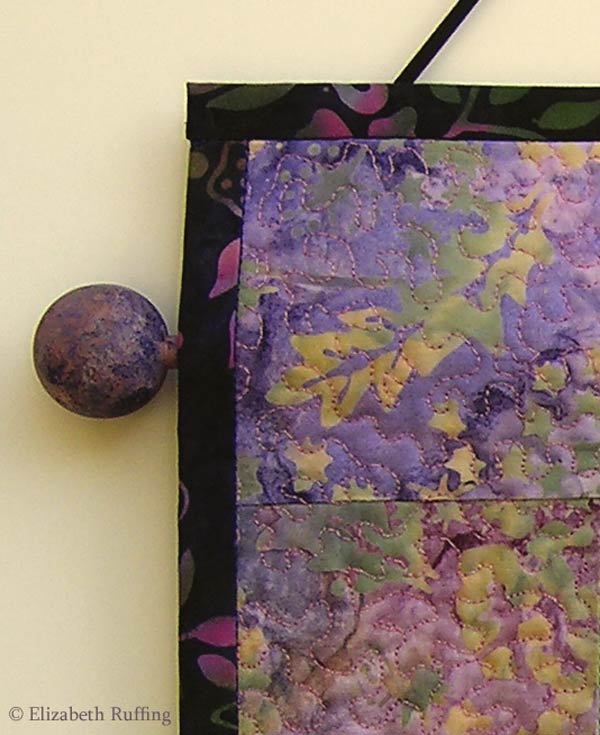 The canvas print was made using archival-quality pigment-based Epson UltraChrome ink, and is varnished with Liquitex acrylic matte varnish for protection. A black ribbon is included for hanging. It would also look very nice framed.
The canvas print was made using archival-quality pigment-based Epson UltraChrome ink, and is varnished with Liquitex acrylic matte varnish for protection. A black ribbon is included for hanging. It would also look very nice framed.
The size of this piece is 11 1/2 by 13 1/12 inches.
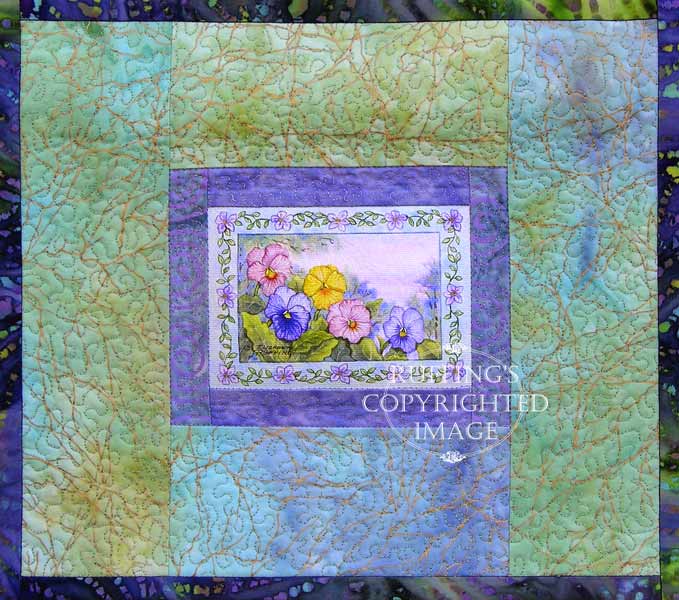 This art quilt features a canvas print of my watercolor painting “Pansies”, with a decorative border around the image.
This art quilt features a canvas print of my watercolor painting “Pansies”, with a decorative border around the image.
 It has the same stippling stitching and a sleeve with matching hand-painted wooden rod and ribbon for hanging.
It has the same stippling stitching and a sleeve with matching hand-painted wooden rod and ribbon for hanging.
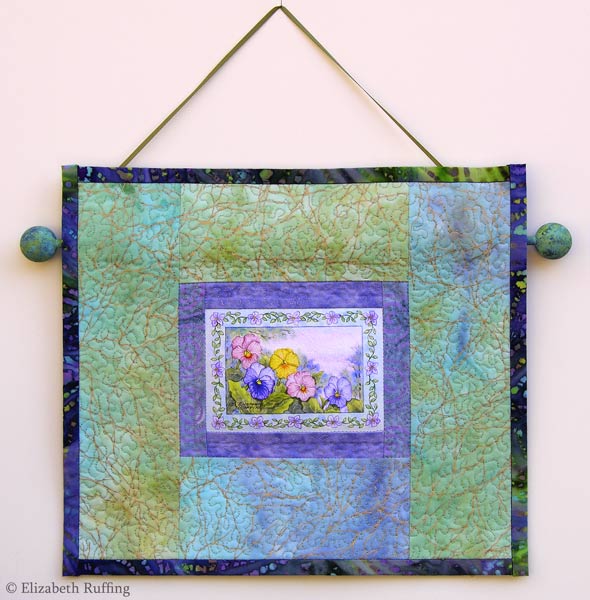 The edges are finished with a cotton batik binding.
The edges are finished with a cotton batik binding.
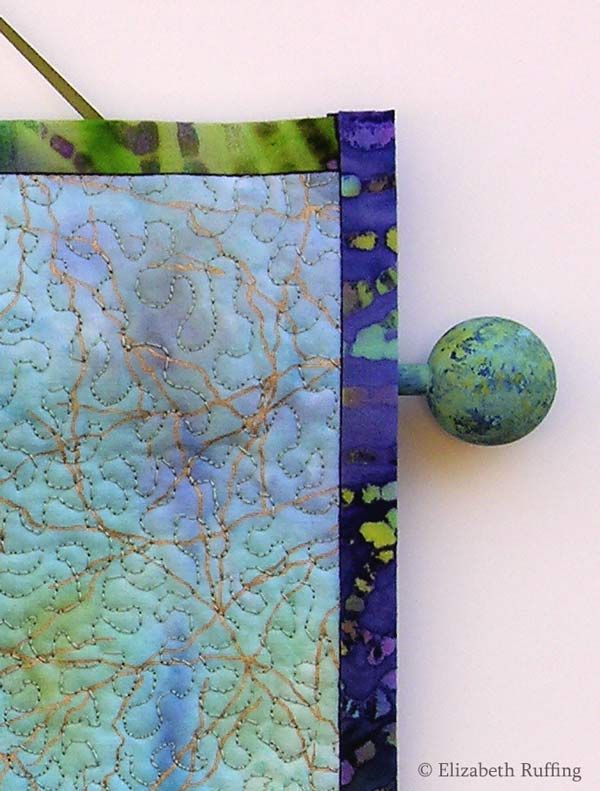 This quilted wallhanging is approximately 11 x 12 1/2 inches.
This quilted wallhanging is approximately 11 x 12 1/2 inches.
Both quilts and their matching hanging rods were made entirely by me, and I’m very pleased with both of them.
Me, and a floral and batik art quilt project
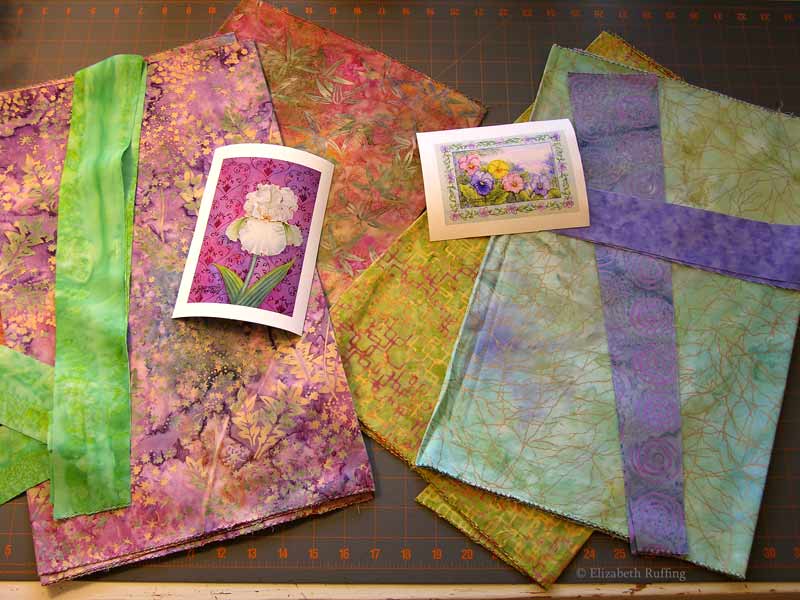
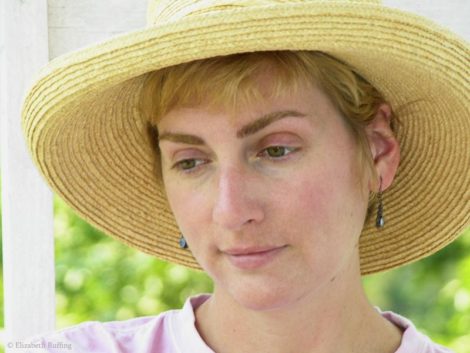 This me, Elizabeth, in my favorite straw sun hat. I wear it when we go out walking. I have other straw hats that I use for gardening or for working in the yard. I love flowers and I’m making two floral art quilts, incorporating my love of gardening, painting, and sewing. One is based on a watercolor painting I did of an iris flower.
This me, Elizabeth, in my favorite straw sun hat. I wear it when we go out walking. I have other straw hats that I use for gardening or for working in the yard. I love flowers and I’m making two floral art quilts, incorporating my love of gardening, painting, and sewing. One is based on a watercolor painting I did of an iris flower.
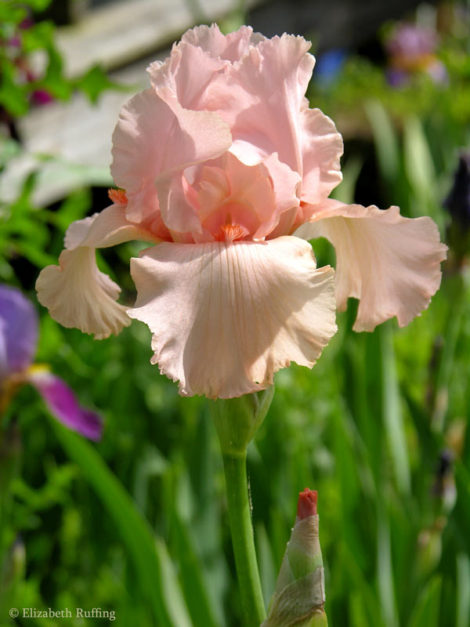 I brought many of my iris plants with me, when we moved from New York state to North Carolina. I kept them in containers on the balcony of our apartment, and then planted them behind our new house. Many of them are my grandma’s irises.
I brought many of my iris plants with me, when we moved from New York state to North Carolina. I kept them in containers on the balcony of our apartment, and then planted them behind our new house. Many of them are my grandma’s irises.
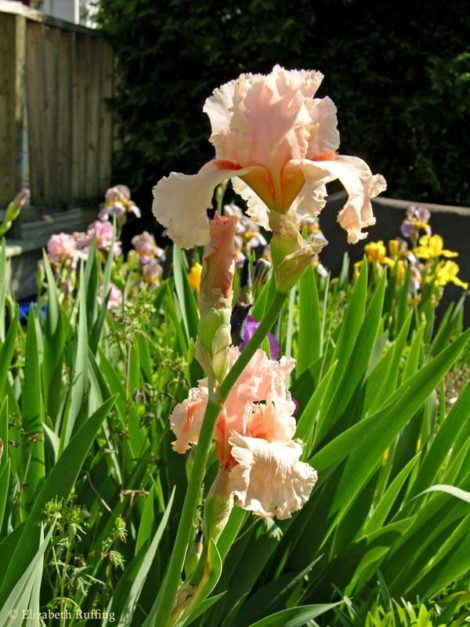 I painted one pink iris on an Art Nouveau inspired wallpaper background, which I designed.
I painted one pink iris on an Art Nouveau inspired wallpaper background, which I designed.
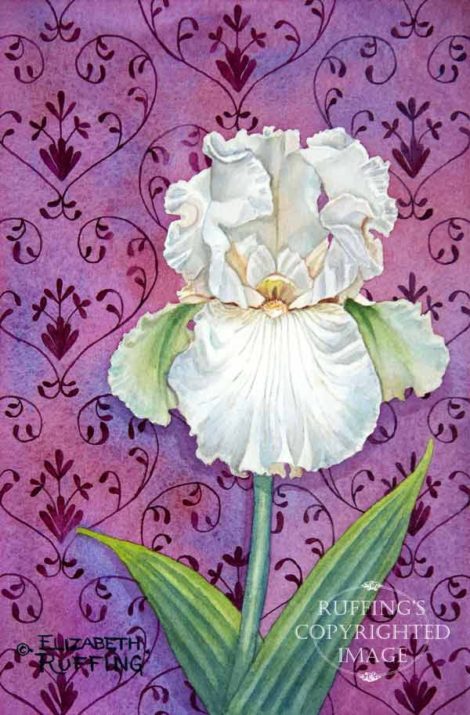 I printed this image on canvas that was made for use in our Epson printer. I sealed it with Liquitex matte varnish, because I am going to use this art quilt as a wall hanging.
I printed this image on canvas that was made for use in our Epson printer. I sealed it with Liquitex matte varnish, because I am going to use this art quilt as a wall hanging.
The second image I am using is printed from my watercolor painting of pansies. It has a light blue border, with decorative flowers.
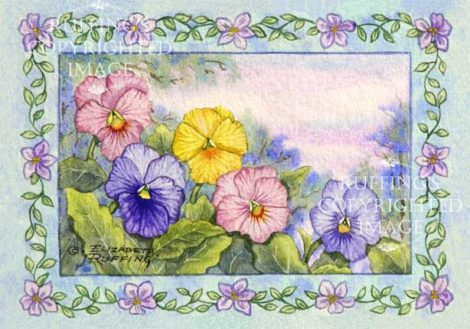 Pansies are so adorable and cheerful.
Pansies are so adorable and cheerful.
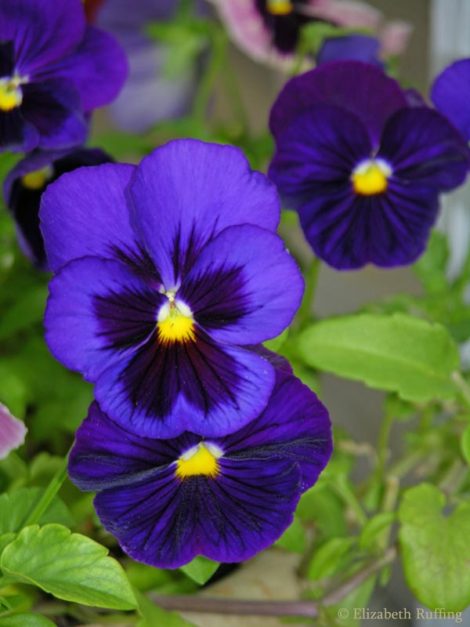 The come in such pretty colors, just like batik fabrics, which I am using to frame my canvas prints. I’m using an assortment of cotton batiks, which blend together nicely for quilts.
The come in such pretty colors, just like batik fabrics, which I am using to frame my canvas prints. I’m using an assortment of cotton batiks, which blend together nicely for quilts.
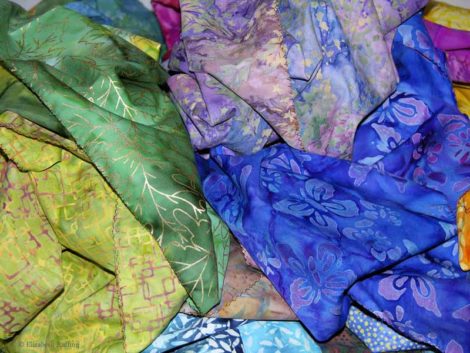 This is the pile of cotton batik fabrics, waiting to be pre-washed, before I sew them into a quilt. I sewed a zig-zag stitch along the raw edges, to keep them from fraying in the washing machine. I like to wash my fabrics before I use them, to compensate for shrinkage, and because I find the smell of fabric sizing irritating.
This is the pile of cotton batik fabrics, waiting to be pre-washed, before I sew them into a quilt. I sewed a zig-zag stitch along the raw edges, to keep them from fraying in the washing machine. I like to wash my fabrics before I use them, to compensate for shrinkage, and because I find the smell of fabric sizing irritating.
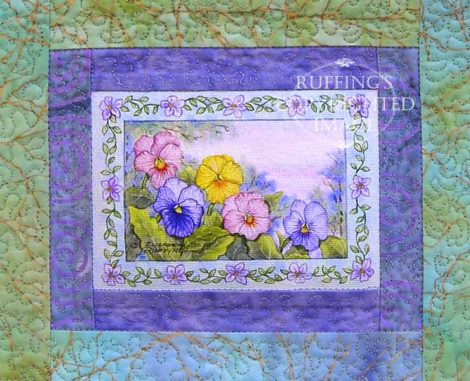 Once the layers are sewn together, I am adding a sleeve to the back of each quilt. I finish the edges of the sleeves, fold them in half lengthwise, and the attach them to the top edge of each quilt, on the backs of the quilts. I hand stitch the lower edge of each sleeve to the back of the quilt. Then I add binding to the edges of the quilts, avoiding the openings of the sleeves.
Once the layers are sewn together, I am adding a sleeve to the back of each quilt. I finish the edges of the sleeves, fold them in half lengthwise, and the attach them to the top edge of each quilt, on the backs of the quilts. I hand stitch the lower edge of each sleeve to the back of the quilt. Then I add binding to the edges of the quilts, avoiding the openings of the sleeves.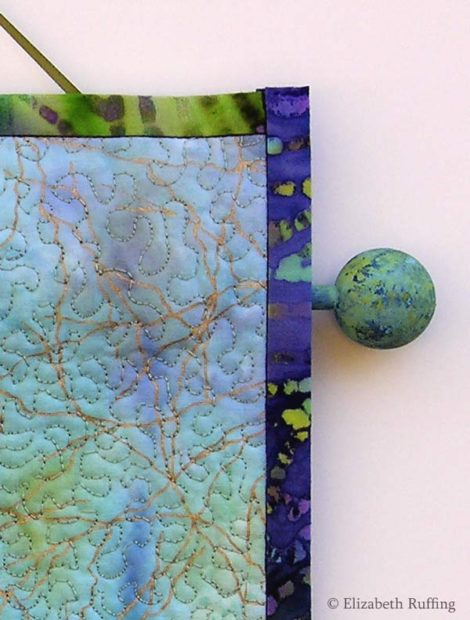 I am using coordinating acrylic paints, and a sponge to paint the rods to match my quilts. I varnish them, and when they were dry, I insert them in the sleeves. I tie a ribbon to each display rod, to hang them up.
I am using coordinating acrylic paints, and a sponge to paint the rods to match my quilts. I varnish them, and when they were dry, I insert them in the sleeves. I tie a ribbon to each display rod, to hang them up.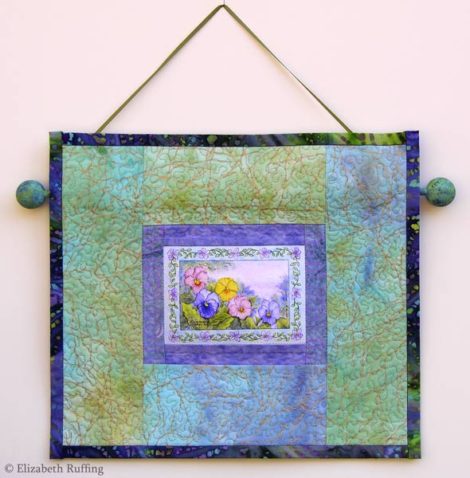 The finished floral art quilts can be seen in more detail in this post: https://ruffings.com/2007/02/ooak-one-of-a-kind-original-iris-and-pansy-floral-art-quilts.html
The finished floral art quilts can be seen in more detail in this post: https://ruffings.com/2007/02/ooak-one-of-a-kind-original-iris-and-pansy-floral-art-quilts.html